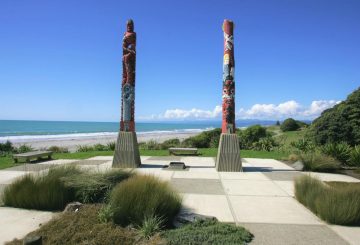Việc mở cửa trở lại biên giới và sự trở lại của khách du lịch và tàu du lịch đã dẫn đến sự phục hồi về số lượng cho sân bay và cảng của Marlborough, phù hợp với mức trước COVID. Cả Port Marlborough và Sân bay Marlborough, các công ty con của MDC Holdings thuộc Hội đồng Quận Marlborough, đều lập kỷ lục cá nhân trong năm tài chính 2022-23.
Warren McNabb, Chủ tịch của Port Marlborough NZ, mô tả năm này là “xuất sắc” sau khi công ty đạt doanh thu kỷ lục. Tuy nhiên, ông cảnh báo rằng một số kết quả chỉ xảy ra một lần và công ty bắt đầu cảm thấy tác động của việc tăng lãi suất. Doanh thu đạt 41 triệu đô la, cao nhất trong hơn một thập kỷ, tăng từ 34,4 triệu đô la của năm trước. MDC Holdings, cổ đông duy nhất của cảng, nhận được cổ tức 4,4 triệu đô la.
Rhys Welbourn, Giám đốc điều hành của Port Marlborough, lưu ý rằng sự gia tăng hoạt động dẫn đến tăng 10% lượng khí thải carbon tại cảng. Để giải quyết vấn đề này, cảng có kế hoạch biến khu rừng thương mại của mình thành một “bể chứa carbon” vĩnh viễn bằng cách chuyển từ trồng thông sang các giống cây bản địa và gỗ cứng. Tuy nhiên, Welbourn cũng đề cập rằng 70% chi phí của cảng đã được cố định và đang tăng lên, chỉ riêng bảo hiểm đã tăng 40% trong năm nay.
Adrian Ferris, Giám đốc Tài chính tại Sân bay Marlborough, cho biết năm tài chính 2022-23 đã “hồi sinh”. Doanh thu của sân bay đạt kỷ lục 4,7 triệu đô la, nhưng lợi nhuận khiêm tốn chỉ dưới 40.000 đô la. Mặc dù vậy, Ferris chỉ ra rằng một số yếu tố, như đóng lại đường băng, đã ảnh hưởng đáng kể đến sổ sách và không phản ánh chính xác lợi nhuận của sân bay. Khoản nợ của sân bay, được dự đoán là 5,5 triệu đô la vào cuối năm 2023, cuối cùng ở mức 3,02 triệu đô la. Phó Thị trưởng Marlborough David Croad ca ngợi kết quả của sân bay.





























































